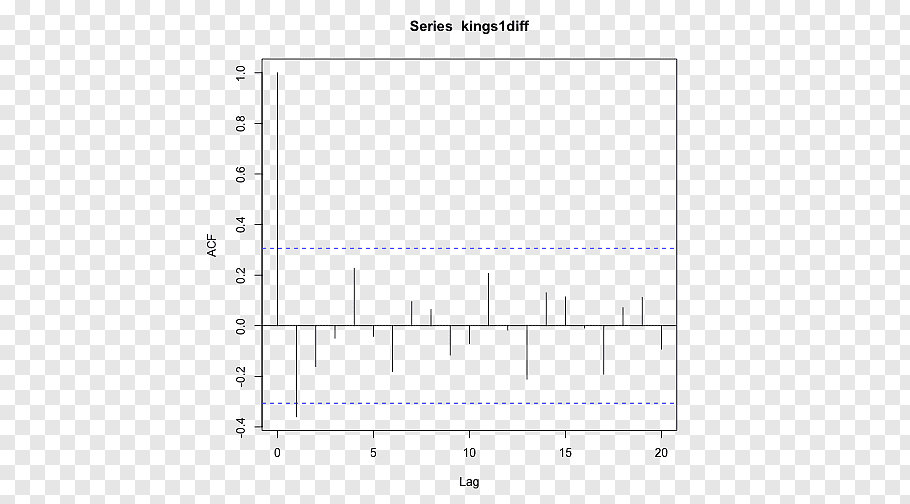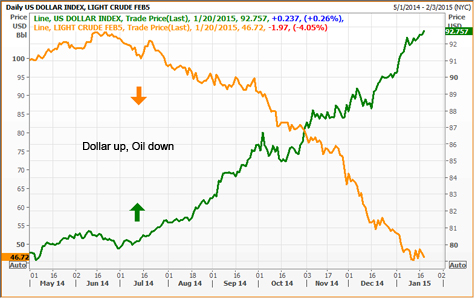Contents:


If you create a TNR, the open invoice entry is replaced with the payment document. Trade receivables are easy to calculate – they’re simply the total of all currently outstanding invoices sent to customers or clients. As well as referring to trade receivables, the term ‘accounts receivable’ is also used to mean the organization’s team responsible for collecting customer payments. Notes receivable are classified as long-term or short-term, depending on the duration. Notes receivable that are due more than one year after the date recorded on a balance sheet must be reported as long-term assets. Notes receivable that are due within one year of the date recorded on a balance sheet must be reported as current assets.
- According to these rules, we record assets, dividends, and expenses as a debit and not a credit.
- Accounts payable and accounts receivable become part of the cash flow before any actual money reaches bank accounts.
- As the note receivable is interest-bearing, the payee is bound to pay the interest as per the annual interest rate mentioned in the notes receivable.
- Brown signs a six‐month, 10%, $2,500 promissory note after falling 90 days past due on her account, the business records the event by debiting notes receivable for $2,500 and crediting accounts receivable from D.
To show the initial recording of notes receivable, assume that on 1 July, the Fenton Company accepts a $2,000, 12%, 4-month note receivable from the Zoe Company in settlement of an open account receivable. There are several elements of promissory notes that are important to a full understanding of accounting for these notes. These are the note’s principal, maturity date, duration, interest rate, and maturity value.
Company B now makes its journal entry $500,000 under Notes Receivable. The interest accrued at the year’s end is recorded in the journal and upon payment of the ending note balance, company B will again journal the collection. In case company A dishonours the respective Notes Receivable, B converts it into Accounts Receivable.
Accounts payable and accounts receivable become part of the cash flow before any actual money reaches bank accounts. The same interest calculation formula is used for both long-term and short-term notes receivable. However, for long-term notes receivable, interest that remains unpaid is typically added to the principal amount and compounded for interest that’s carried over from one year to the next. Adjusting entries for accumulated interest must be made on the date the accounting period ends.
Companies that don’t use Notes Receivable
In this case, a note and the accumulated interest would be converted to accounts receivable. Interest is computed as the principal amount multiplied by the part of the year, multiplied by the annual interest rate. The entry to record accumulated interest increases interest receivable and interest revenue. When the note is due within less than a year, it is considered a current asset on the balance sheet of the company the note is owed to.
TanServ Launches Inebura, a B2B Accounts Receivable Automation Software Mint – Mint
TanServ Launches Inebura, a B2B Accounts Receivable Automation Software Mint.
Posted: Wed, 15 Mar 2023 07:00:00 GMT [source]
The terms ‘trade receivables’ and ‘accounts receivable’ generally mean the same. Both represent the amount of money customers owe a business for the goods or services they’ve received. However, ‘accounts receivable’ is also used to refer to the department that handles trade receivables collection and the process they use to do it. ‘Trade receivables’ is generally limited to only referring to the receivables themselves.
Accounts Payable and Receivable – Two Sides of One Coin
In accounting, notes receivables are accounts to keep track of accrued assets that have been earned but not yet received. Square, the mobile payments company, allows small businesses to take credit cards by swiping customer credit cards using a small square device attached to the audio jack found on mobile devices. Since its founding in 2009 and the launch of its first app in 2010, Square has found its way into many small businesses – and large businesses.
- The interest earned on a note receivable is recorded as interest income on the income statement.
- Promissory notes strengthen a company’s legal claim against those who fail to pay as promised.
- Identify the three main advantages of a computerized accounting system over a manual accounting system.
- Hence, a dishonored note is a note that the maker defaulted to pay at maturity.
When the company receives the payment demand – usually in the form of an invoice – for purchased goods or services, they record the anticipated payment as an account payable. This measures how many times the company has collected payments to accounts receivable during an accounting period. Trade receivables are all invoices for goods or services that have been delivered to customers or clients but haven’t yet been paid for. They’re likely to be the largest asset on most businesses’ balance sheets, as they represent all the outstanding money owed to your business but is due soon. Current assets are assets which are expected to be converted to cash in the coming year.
World’s Only AI-Powered Accounts Receivable Solution to Create Working Capital Impact
However, that short-term solution requires careful consideration, as it may influence the company’s credibility with suppliers. An accounts payable manager coordinates the team and implements operational strategies to ensure efficient AP team cooperation. Every accounts payable department is unique in design depending on the company’s needs, but several general roles need to be represented in the AP team.

To calculate your DSO, divide your total accounts receivables by the total number of credit sales. Then, multiply the results by the number of days for the corresponding period (month, quarter, year, etc.). You can have both short-term and long-term notes receivable, but accounts receivables are always short-term. On the accounts payable side, you record transactions in the A/P subledger once you receive a bill or invoice from a supplier .
However, he or she only records credit payments to match transactions representing Farmer Andy’s installment payments or lump sum repayment. The adjusting entry to estimate the expected value of bad debts does not reduce accounts receivable directly. Accounts receivable is a control account that must have the same balance as the combined balance of every individual account in the accounts receivable subsidiary ledger. For tax purposes, companies must use the direct write-off method, under which bad debts are recognized only after the company is certain the debt will not be paid. Before determining that an account balance is not collectible, a company generally makes several attempts to collect the debt from the customer.

To give an example of trade receivables, a company might invoice its customer $475 for the sale of materials. Under double-entry accounting principles, the company will credit the sales account by $475 while also debiting the trade receivables account by the same amount. Once the customer has paid the bill, the company will credit the trade receivables account by $475 and debit the cash account. Most companies operate by allowing a portion of their sales to be on credit. Sometimes, businesses offer this credit to frequent or special customers that receive periodic invoices. The practice allows customers to avoid the hassle of physically making payments as each transaction occurs.
Accounts Receivables Turnover
The interest https://1investing.in/ is the part of a loan charged to the borrower, expressed as an annual percentage of the outstanding loan amount. Interest is accrued daily, and this accumulation must be recorded periodically . The Revenue Recognition Principle requires that the interest revenue accrued is recorded in the period when earned.
Any amount of money owed by customers for purchases made on credit is AR. What is the difference between an account receivable and a note receivable? Be able to define terms related to notes (e.g., maker, payee, principal, etc.).How is “interest” on an obligation calculated? Be able to account for the various phases in the life cycle of a note, including issuance, interest accruals, and maturity.Know how to account for the dishonor of a note. In notes receivables, a promissory note is used to agree on a longer payment period between you and the second party . A promissory note helps enforce your legal claim to payment from the debtor.
Notes receivable are negotiable i.e., they are transferable instruments and can be used to meet current financial obligations by selling or transferring their ownership to someone else. The new bearer or holder of the note would have the same claim on the note as the original payee had. By “manually,” we mean, for example, obtaining documents via post or email, recording them in spreadsheets and clarifying details over the phone, making payments in cash checks, and so on. Accounts payable include all short-term obligations, such as office supplies and equipment, power and fuel, software licenses, other maintenance services, etc.

A notes payable is the corresponding document for notes receivables or promissory notes. The notes payable is a liability account included in the general ledger that details the debt owed. Retail Bob has a notes receivable to show how much it can expect to receive, while Farmer Andy has a notes payable to detail what it must repay. HighRadius’ AI-Driven Autonomous Finance Solution allows you to eliminate manual steps and streamline operations.
Customers frequently sign promissory notes to settle overdue accounts receivable balances. Brown signs a six‐month, 10%, $2,500 promissory note after falling 90 days past due on her account, the business records the event by debiting notes receivable for $2,500 and crediting accounts receivable from D. Notice that the entry does not include interest revenue, which is not recorded until it is earned.
However, both have various distinct features and are created and dealt with in different manners and circumstances. If the note term does not exceed one accounting period, the entry showing note collection may not reflect interest receivable. For example, let’s say the company’s note maturity date was 12 months instead of 24 . Often, a business will allow customers to convert their overdue accounts (the business’ accounts receivable) into notes receivable. By doing so, the debtor typically benefits by having more time to pay.
Everything you need to know about accounts payable – Thomson Reuters Tax & Accounting
Everything you need to know about accounts payable.
Posted: Thu, 06 Apr 2023 21:24:21 GMT [source]
If a what is notes payable has receivables, this means that it has made a sale on credit but has yet to collect the money from the purchaser. Essentially, the company has accepted a short-term IOU from its client. Companies record accounts receivable as assets on their balance sheets because there is a legal obligation for the customer to pay the debt. They are considered a liquid asset, because they can be used as collateral to secure a loan to help meet short-term obligations. Customers are given resources like electricity by power companies, who bill the customers after they have used the resources .
Interest on a note receivable is calculated by multiplying the principal balance of the note by the interest rate and by the number of days that have elapsed since the last interest payment was made divided by 365. The difference between notes receivable and traditional loans is that banks do not make these loans directly to borrowers. Instead, they sell them to investors and institutions who purchase them as investments. Maintaining liquidity is the most important aspect of running a successful business.
Leave a Reply